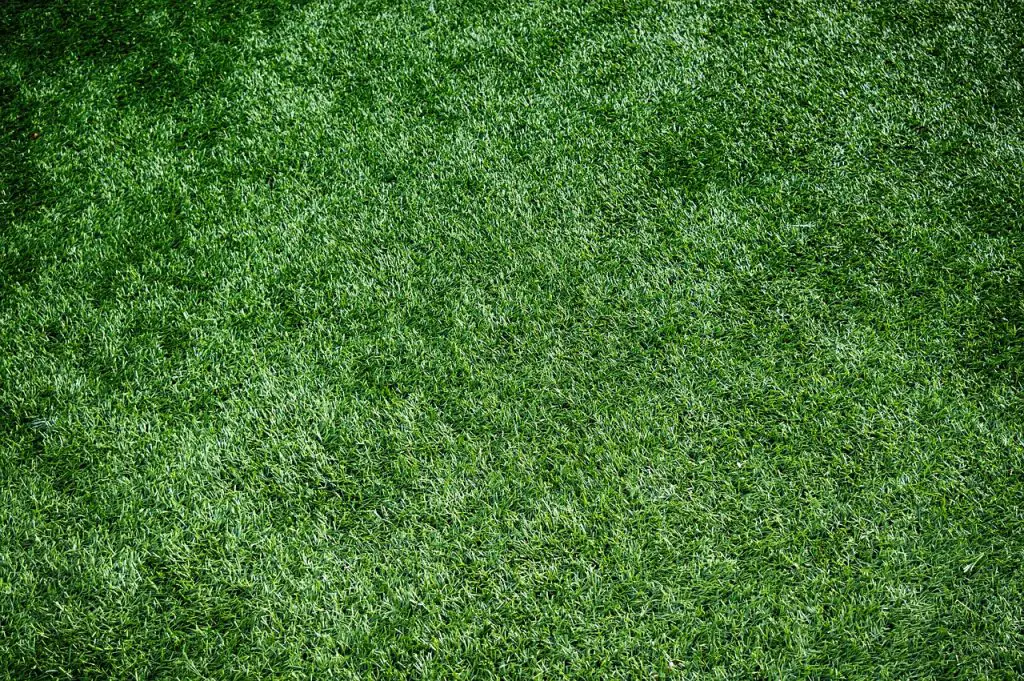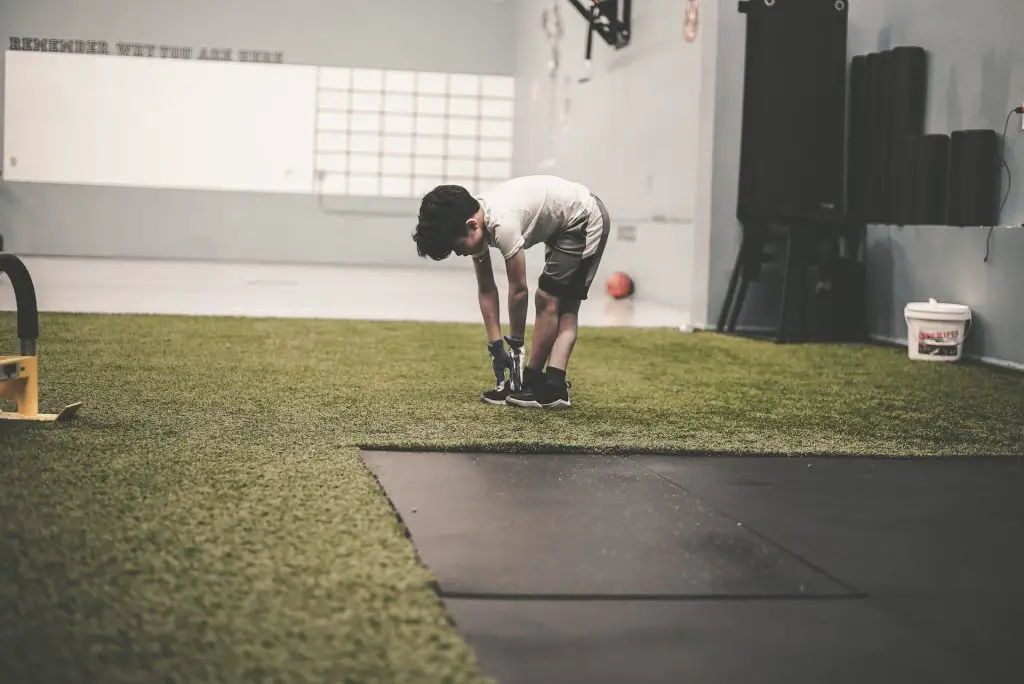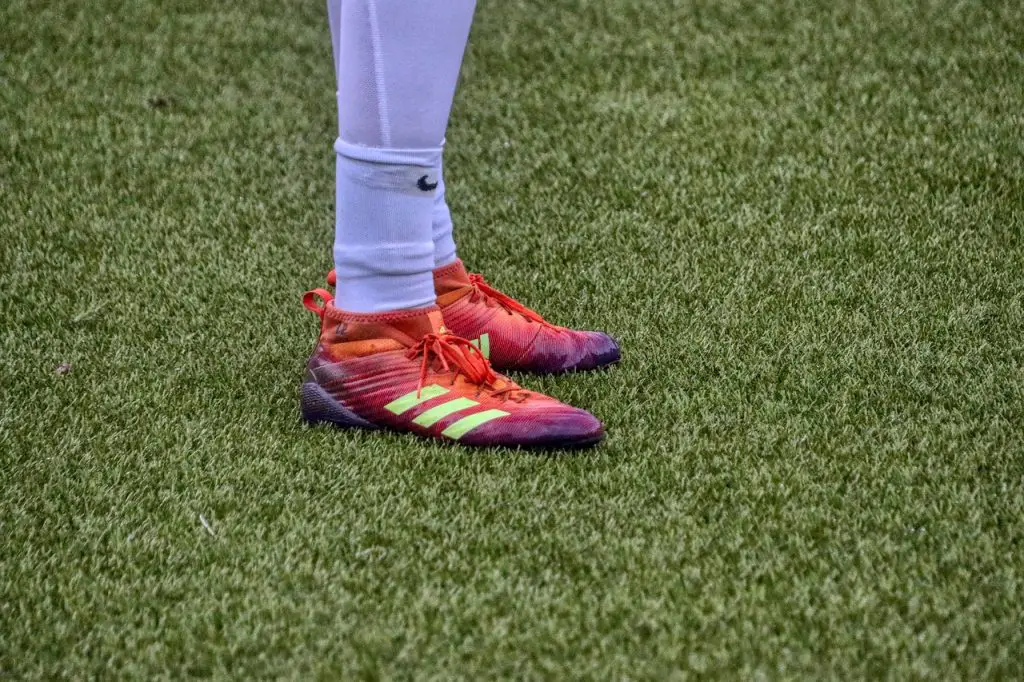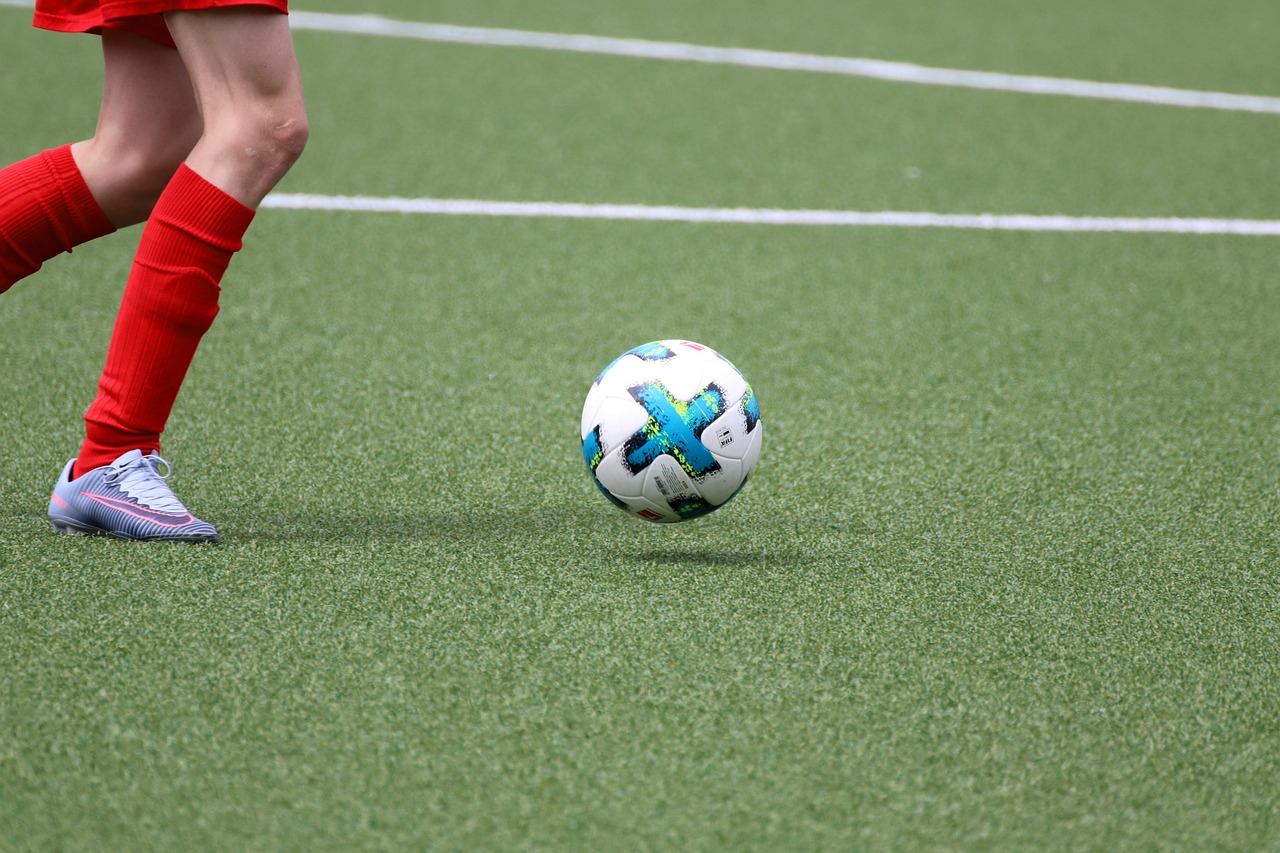Artificial grass (also called artificial turf) is a popular alternative to natural grass, and that popularity is only growing. Knowing this, you may be curious about artificial grass or considering how to use it. With that in mind, this is what artificial grass is and why people use it.
Artificial grass is a man-made alternative to natural grass, made from various materials, such as nylon, polypropylene, and polyethylene. It’s low maintenance, durable, and aesthetically pleasing. People use it for lawns, athletic facilities, commercial properties, and recreational areas.
In this content you’ll learn:
Understanding The Basics Of Artificial Grass

The road to understanding artificial grass begins with its basics.
Let’s start with what artificial grass is in general.
What Is Artificial Grass?
Manufacturers make artificial grass from various materials, such as nylon, polypropylene, and polyethylene. These materials mimic the appearance of natural grass lawns while benefiting from the advantages of durability and low-maintenance needs.
What Do People Use Artificial Grass For?
People use artificial grass for residential lawns, commercial landscapes, playgrounds, sports fields, and indoor applications. Each installation differs in pile height, density, color, and other characteristics to meet the specific requirements for the intended use.
What Is Artificial Grass Infill?
Installers spread infill across the surface to provide cushioning and support for artificial grass blades. Manufacturers make infill from materials such as sand or rubber granules. It can further affect surface playability and temperature.
The Purpose Of Artificial Grass’s Multiple Layers
Several necessary layers provide drainage, support, and comfort for artificial grass to replace natural grass. These layers are a:
- Base layer: Comprised of compacted soil or aggregate to create a solid base
- Drainage layer: Constructed to handle water runoff
- Artificial grass layer: Designed to look and feel like natural grass
The Importance Of Backing Material
Backing material serves as a foundation, holding the artificial fibers in place. It provides stability and support, giving artificial grass a durable and long-lasting material that aids drainage and prevents weed growth.
Backing materials come in various types based on the artificial grass’s location and use. Manufacturers make most backing materials from a combination of natural and man-made materials.
These include polypropylene, an artificial fiber that resists moisture and chemicals and is a strong, durable thermoplastic polymer. Polyethylene is flexible and withstands extreme weather conditions, together with good UV-resistant properties.
Manufacturers use natural and synthetic latex as a backing material, giving it extra stability and resilience. They use urethane in high-end or specialized artificial grass products as it is exceptionally strong and flexible.
Among its many benefits, backing material provides the following:
- Stability and fiber control, preventing fibers from shifting or moving
- Drainage assistance – manufacturers make backing material with tiny pores or perforations that allow excess water to flow through the backing material and drainage layer
- Weed growth prevention
Five Advantages Of Artificial Grass Over Natural Grass

Artificial grass offers a multitude of advantages over natural grass. These are five of them, starting with its reduction of resource usage.
Artificial Grass Conserves Resources
Unlike natural grass, artificial grass doesn’t require watering, mowing, or using harmful pesticides. It also eliminates the need for fertilizers and dramatically reduces water consumption. These advantages give it an environmentally friendly edge, in some ways, over natural grass.
In scorching climates, light watering early in the morning helps keep artificial grass’s surface temperatures down throughout the day. The infill layer absorbs and evaporates the water, cooling the surface.
The Maintenance Needs Of Artificial Grass Are Minimal
Going along with the above benefit, artificial grass requires only minimal maintenance. This includes clearing away any debris, grooming, weeding, and cleaning.
It’s Aesthetically Pleasing
Artificial grass is consistently green and aesthetically pleasing throughout the year, regardless of weather conditions. Because of its low-maintenance needs, this is an easy aesthetic to uphold.
Artificial Grass Is Great For Athletes And Sports Teams
Artificial grass offers sports teams a consistent and durable playing surface year-round and helps reduce the risk of injury. It also has the added bonuses from above, making it ideal for sporting surfaces.
Artificial Grass Is Extremely Durable
Nylon, polyethylene, and polypropylene fibers make artificial grass extremely durable and resistant to all weather conditions. It maintains its vibrancy throughout the year. If installing artificial grass outdoors, using a product with a high UV-resistant rating is best. This will extend the installation’s life.
If not manufactured with a UV additive or stabilizer, the sun’s UV rays break down the chemical bonds in yarns and fibers. For this reason, it’s best to use only the highest quality artificial grass manufactured in the USA and Europe.
How Artificial Grass Benefits Five Property Types

While artificial grass may seem limited to sports fields and athletic facilities, it can also add plenty of value to other property types.
With this in mind, let’s start with residential properties and landscapes.
Residential Lawns And Gardens
While it may seem unusual and won’t be for everyone, you can use artificial grass for residential lawns and gardens. Its low upkeep and enduring aesthetics make it a good choice for this kind of use. In addition, you can still enjoy all the benefits of a natural-grass lawn as you could with an artificial-grass one, such as playing with your pets or kids.
Sports Fields And Athletic Facilities
Sports fields and athletic facilities benefit from artificial grass’s extreme durability. This is in addition to its consistent appearance and utility, meaning it’s available whenever people need it.
Playgrounds And Recreational Areas
Artificial grass offers a safe and accessible play area with a cushioned surface. This means a reduced risk of injuries from falls. Artificial grass play areas extend playtime, making it a popular school choice.
Commercial And Public Spaces
Real-grass lawns are a challenge to maintain in busy areas. Artificial grass solves the problem of maintaining an attractive outdoor space with high foot traffic. It withstands heavy use and retains its visual appeal, making it ideal for parks, shopping centers, and public gathering spaces. Commercial property managers benefit from reduced maintenance costs, improved aesthetics, and an improved visitor experience.
Rooftop Gardens And Balconies
Urban areas need more natural green spaces. Artificial grass can transform rooftops and balconies into vibrant and enjoyable outdoor retreats.
Eight Considerations For Choosing Artificial Grass

When selecting artificial grass, it’s essential to consider several factors. Doing this ensures your choice fits your specific purpose.
Here’s what to keep in mind.
Level And Type Of Use For The Artificial Grass
Different property types have different needs and foot traffic levels. For example, a sports facility needs artificial grass to endure heavy use. This need is unlike a residential lawn, which may only see light use.
When choosing artificial grass, ensure it fits the level and type of use.
The Artificial Grass’s Pile Height And Density
Pile height refers to the length of each artificial grass blade. Density refers to the number of fibers per square inch. These factors significantly impact your artificial grass’s appearance, feel, and durability.
To be more specific, higher pile heights give the appearance of a more lush lawn. Denser artificial grasses will provide more resilience and a softer feel.
The Artificial Grass’s Color And Appearance
You can order your artificial grass in shades of green, red, brown, and blue. Some options mimic natural lawns with various colors combining to mimic a natural look. You can select the most suitable color and appearance by considering the surrounding environment and your desired visual effect.
How Much UV Resistance And Fade Protection It Will Need
Artificial grass can withstand prolonged sun exposure without fading or deteriorating. Make sure your artificial grass offers the highest UV resistance and fade protection possible if you live in a very sunny, hot area.
The Artificial Grass’s Warranty And Product Lifespan
You get what you pay for. So, make sure your artificial grass comes with a manufacturer’s warranty. This will protect against defects and let you know the product’s lifespan. Artificial grass can last between 10 and 20 years, depending on its use and location.
Budget Considerations
Artificial grass may be more costly to install than natural grass, but it offers excellent long-term cost savings. Estimating cost savings, if any, for an upfront cost versus an overtime cost is worthwhile. In other words, will paying more upfront for artificial grass save you maintenance costs over time for natural grass?
Ensure Your Artificial Grass Is Certified
Before proceeding with any installation, check that your artificial grass is certified with an ISO or IPEMA certification. This ensures that you are receiving a reliable and reputable product.
Find An Experienced Contractor
For such a potentially large job, you’ll want an experienced contractor. Finding one may take some time upfront, but it’s essential to ensure a successful artificial grass installation.
Final Thoughts On Artificial Grass
Artificial grass is an exciting, potentially time- and cost-saving alternative to natural grass. While it doesn’t make sense for everyone to make the change, for some, it does. Contact a professional for an estimate if you’re considering such a switch.
Before you do, what are your thoughts on artificial grass and how people use it? Did anything surprise you? What other questions do you have? Let us know in the comments below!

Based upon one incredibly lousy experience, I would never purchase or use any Snapper product.
I have the grim misfortune of owning a Snapper lawn mower which my future wife purchased new from a dealer in 2016. The model # is 12ALC3B3707 per a label on the mower chassis and 1696628 per the owner’s manual that came with the mower.
Said product is a total piece of crap. If OSHA and the EPA possessed any level of competence, they would order a recall of this product.
The mower has one good feature – the single lever mechanism to raise and lower the mower deck. This one feature is far outweighed by many its worthless features, among which are:
(1) The design of the grasscatcher attachment to the mower is unacceptably poor. During operation, the grasscatcher frequently falls off and becomes a tripping hazard.
NOTE: I mitigated this defect by installing a chain on the catcher and a knob on the rear discharge door (RDD). This work around is an annoyance to use but is better than the risk of injury.
(2) When “properly” mounted, there is a 1” gap between the catcher and the RDD. During the brief period that the grasscatcher remains attached to the mower, the mower throws a continuous stream of clippings and dust into the face of the operator.
NOTE: I mitigated this defect by mounting a shield on the catcher bonnet. Like the chain, this work around is an annoyance to use but is better than the risk of eye or lung injury.
(3) The mower leaves a substantial trail of clippings in its wake even when the grasscatcher bag is empty. The mower leaves more clippings than it collects after the bag is a third to half full. My old Toro is much better.
(4) The automatic start feature is a joke. One must leave it on the charger overnight to get one decent start. If the mower should stall during operation, forget autostart. One must use the pull cord.
(5) The self-propulsion feature is unacceptably poor both in terms of operation and reliability.
a. The various settings appear to regulate torque to the wheels rather than speed – to wit, a higher setting is required to provide any assistance at all on even the gentlest upward slope. On the same setting the mower takes off like a bat out of hell on level ground or on a gentle downward slope.
b. The self-propulsion feature requires frequent servicing. The lower “speed” settings essentially stop working after 3 or 4 lawn mowings.
It is no mystery to me that there are so many lawn equipment dealers in Iowa who formerly sold Snapper products but no longer do so.